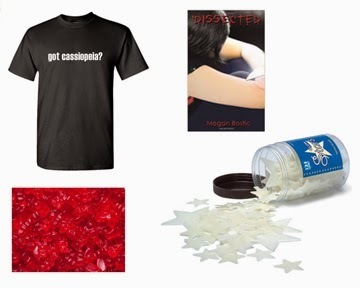Understanding Self Harm
 My book
Dissected
is about a girl who cuts herself to ease her emotional pain. I think a lot of people misunderstand many things about self harm, and that's reasonable given that it's kind of like a dirty little secret that gets locked in the closet or swept under the carpet. In fact, when I was searching for a few statistics for this blog, I even had a hard time coming up with sites that talked about it. Don't get me wrong, there are ways to find out about it, after all, I did a ton of research when writing my book, but you may have to dig a little.
My book
Dissected
is about a girl who cuts herself to ease her emotional pain. I think a lot of people misunderstand many things about self harm, and that's reasonable given that it's kind of like a dirty little secret that gets locked in the closet or swept under the carpet. In fact, when I was searching for a few statistics for this blog, I even had a hard time coming up with sites that talked about it. Don't get me wrong, there are ways to find out about it, after all, I did a ton of research when writing my book, but you may have to dig a little.People that self harm for the most part are not suicidal. They don't want to kill themselves. They are hurting themselves to forget about a larger pain or problem they are feeling, whether they are depressed about something, lonely, or just feeling empty inside.They use the harm as a coping mechanism because they don't know how else to manage their emotions.
Many of them are expert at hiding their wounds for a very long time before being found out. Many hide their injuries beneath long sleeves, some of them cause injury to their legs so no one will see them. These aren't just the broody kids wearing black, sitting in the corner. Just like suicide, the cheerleader, the jock, the valedictorian...any one of them could be a self harmer.
It's may be more prevalent than you think. Research says about 1 in 6 teens have experimented with self harm. In the U.S. 1 of every 200 girls 13 to 19 regularly engages in self injurious behavior. Girls do tend to self harm more than boys, but boys do engage as well.
Those who self harm may have a coinciding undiagnosed mental illness. Common ones are OCD, PTSD, Borderline Personality Disorder, depression, Bi-Polar, Schizophrenia, Eating Disorder. There are others. Self injurious behavior can have serious consequences as well, such as:
Social isolation and poor interpersonal relationshipsIncreasing feelings of shame, disgust, and guiltPoor self-esteem and self-imagePermanent scarringInjured tendons, nerves, blood vessels, and musclesPermanent weakness or numbness in certain areas of the bodyMulti-organ damage and/or failureInfections at the site of self-injurySepticemiaSuicidal thoughts and behaviorsAccidental, inadvertent deathParents, don't feel guilty if you don't find out right away. Teenagers are weird. Who would know the difference between normal teen stuff or something more serious. As I said, some kids are expert at hiding their wounds. Here are some signs you can look for in a self harmer:
Always wearing long pants and long-sleeved shirts, especially when it's inappropriate, like in the summer.Brushing off injuries as frequent “accidents.” Spending a lot of time alone.Challenges with friendships and romances.Gradual withdrawal from once-enjoyed activities.Unpredictable, impulsive, risky behaviors.DepressionIncreased anxietyScarring. Scratches or cuts.Bruises.Broken bones.Patches of missing hair.If you're a teen that's cutting or engaging in some other form of injurious behavior, your first step is to simply tell someone. That will probably be the hardest part. If you can't tell your parents, find someone else you trust to help you whether it's a teacher, school counselor, a friend or friend's parent, a sibling or other relative. People will want to help.
If you're a parent of a self harmer, first of all, don't freak out. Stay calm. There is help out there. Don't assume it's "just a phase." Teens that don't get help may end up being adult cutters. Don't blame yourself or your child. Counseling will get to the bottom of your child's behavior. Don't hide all the sharp objects in your house. That's pretty unreasonable and if a child is going to hurt him or herself, they'll find a way. Be supportive.
I wish I had advice for educators, but I know all school districts handle these children differently, some well, some not so well. I'd be interested to hear from teachers as to how their schools handle self harmers when they are recognized at school.
Here are some resources for those who need assistance
S.A.F.E. (800) 366-8288
National Suicide Prevention Lifeline (800) 273-8255
Students Against Depression Website started in the UK with lots of good info.
To Write Love On Her Arms
Seventeen Magazine online has posted a list of resources on its site.
Okay, so, let's move on to happier things. I'm running a giveaway to celebrate the year anniversary of my book release for Dissected. It's a uber giant prize pack. See...
 t-shirt, book, SWAG (not shown), all RED gummy bears and a jar of glow in the dark stars.
t-shirt, book, SWAG (not shown), all RED gummy bears and a jar of glow in the dark stars.Visit my Facebook page to enter.
Published on November 06, 2014 18:44
No comments have been added yet.



